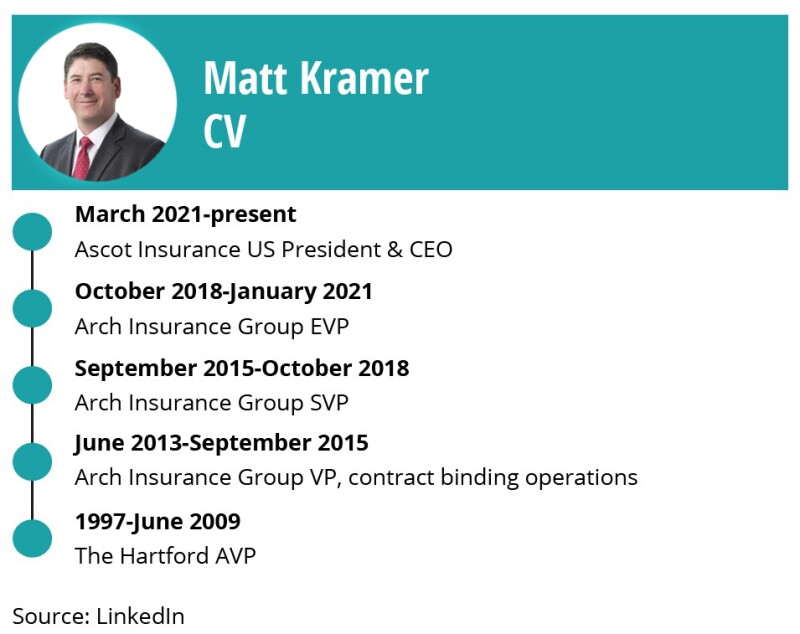A typical cat year should now be thought of in the $100bn-$150bn loss range rather than the traditional $70bn-$100bn due to “some of these unmodeled secondary perils”, Ascot US CEO Matt Kramer told Inside P&C on the sidelines of the WSIA conference in San Diego.
And the rising number of, and uncertainty about, losses is driving flows to E&S.
“One of the things we’re just seeing in the world and in the marketplace is volatility,” Kramer said.
At almost $100bn in E&S premium written in the US past year, according to AM Best’s most recent numbers, that’s driving the increased relevance of the segment.
“We’ve got dedicated products to solve these problems,” Kramer said, adding that Ascot was “built for” the E&S market.
Over 50% of the company’s gross written premium comes through wholesale channels, Kramer said.
As this publication covered in a WSIA note, personal property lines are still only under 5% of the E&S premium captured by stamping offices, but this may not yet capture the fact that high-net-worth business is increasingly flowing into the market – impacted by the rising cost of secondary perils.

Segments in focus
Commercial auto is an interesting area for Ascot, with continued rate coming into the market and better loss control through things such as telematics.
“That’s an area where we’re deploying a little bit more of our capital,” Kramer said.
This publication has written about the challenging market in commercial auto, with rate increases tempered by rising loss costs, but also the hope that telematics might improve loss ratios.
Ascot is also writing more workers’ comp business as it broadens its offerings and looks to accommodate demands from its wholesale brokers.
“The more product we can offer them as a one-stop-shop, the more they’re able to keep deals flowing in their portfolio,” Kramer said.
Flight to quality
Recent news about Vesttoo’s collateral issues will drive a “flight to quality”, as companies in the value chain raise scrutiny of their partners, Kramer said, echoing comments by others on the sidelines of WSIA.
“A lot of the entrants over the last couple of years, they’re going to have a hard time finding capacity,” said Kramer. And it’s “not just the recent news” about Vesttoo, Kramer said.
There have been “about three or four news events” in the MGA and fronting space over the past year that should make the market take note.
“There’s going to be a lot more scrutiny from regulators, from carriers, from reinsurers, from the marketplace in general,” he said, adding all these things should favor established carriers.
AM Best is conducting a review of fronting companies and their collateral arrangements in the wake of the Vesttoo problems, and put Clear Blue’s rating under review. Another peer, Trisura, was put on a negative outlook in March following a write-down of reinsurance recoverables.
There’s going to be a lot more scrutiny from regulators, from carriers, from reinsurers, from the marketplace in general
This publication has argued that the fronting segment should be valued more as risk-taking entities than intermediaries.
Reinsurance not a key concern
The rising cost of secondary perils has also had a major influence on reinsurance conditions this year, as reinsurers hiked attachment points, leaving primary carriers more exposed to low-level losses.
Kramer expects 1 January reinsurance renewals to be “a little bit easier” than in early 2023 as market dynamics look to be more settled, as this publication has written.
He also pointed out that the recent hard market in property has not been driven primarily by reinsurance market dynamics. “It was driven by cat activity, it was driven by loss activity, it was driven by capacity constraints.”


